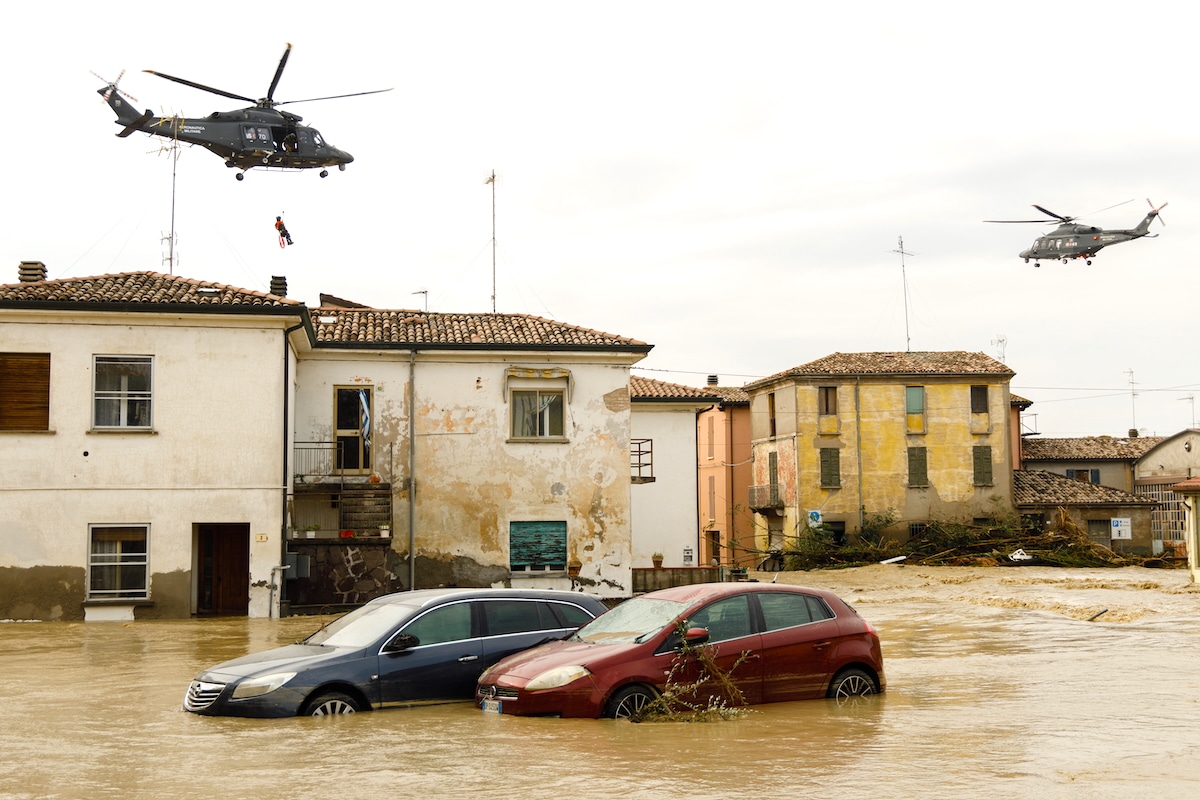Citizens of the hamlet of Traversara are evacuated by Italian Army helicopters in Bagnacavallo, Italy on Sept. 19, 2024. Massimiliano Donati / Getty Images
Founded in 2005 as an Ohio-based environmental newspaper, EcoWatch is a digital platform dedicated to publishing quality, science-based content on environmental issues, causes, and solutions.
As the tail end of Storm Boris hit Italy’s northeast and central regions — including the Emilia-Romagna region in the north — two people were missing, with roughly 1,000 others having been evacuated following devastating floods and landslides.
This just days after causing deadly widespread floods across central Europe.
“The population is on high alert,” Irene Priolo, Emilia-Romagna’s acting president, told Radio Rai 1, as AFP reported. Priolo added that 45,000 people were evacuated last year, but that the damage during Storm Boris was not anticipated to be as extensive.
Schools in Emilia-Romagna have closed, railways have been disrupted and some roads have been impacted by landslides, reported BBC News.
For Emilia-Romagna residents, Storm Boris is a reminder of the deadly flooding that hit the region last year. Thirteen people were killed in May of 2023 when six months’ worth of rain cascaded down in one-and-a-half days, causing more than 20 rivers to overflow their banks.
At the time, tens of thousands were forced to evacuate, with the flooding causing billions of euros in damage.
In the midst of Storm Boris, authorities advised residents to move to upper floors and avoid their basements. Lessons and exams were canceled at the University of Bologna, while in Ravenna, libraries, parks and schools were closed.
“We are in a full emergency,” Michele De Pascale, mayor of Ravenna, told Radio 24, as The Guardian reported. De Pascale said the situation was “very similar to what we had last May.”
In the city of Faenza, approximately 31.1 miles southeast of Bologna, two rivers rose rapidly overnight, forcing residents to flee their homes using dinghies, reported BBC News. The high river levels also caused an overflow of the sewage system.
On Thursday morning, Bologna authorities said river levels were under control, though a weather alert for most of the flood-soaked region would continue until Friday.
Red flooding and landslide warnings were issued for the eastern portion of the Emilia-Romagna region.
Since Wednesday, the seaside resort of Falconara, located on the Adriatic coast, had gotten eight inches of rain — well above the September average of 2.64 inches. More than 11.8 inches were recorded over the mountain region of Apennine.
By Friday, the rainfall was expected to lessen, with the weekend predicted to be mostly dry. The risk of flooding could persist, however, as the continent continues to recover from the slow-moving storm.
Before inundating Italy with severe rainfall, low-pressure system Storm Boris led to the deaths of at least 24 people across the Czech Republic, Austria, Poland and Romania.
For years, climate scientists have warned of extreme rainfall events occurring more frequently as the planet heats up due to climate change.
Subscribe to get exclusive updates in our daily newsletter!
By signing up, you agree to the Terms of Use and Privacy Policy & to receive electronic communications from EcoWatch Media Group, which may include marketing promotions, advertisements and sponsored content.
